All about growing potatoes
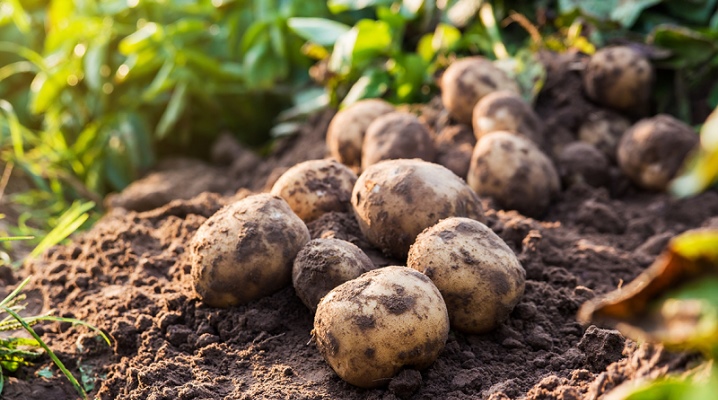
Potatoes can rightfully be called one of the most popular and even legendary crops, which are cultivated by almost all owners of vegetable gardens and summer cottages. At the same time, most of them believe that they know everything about growing potatoes.
However, this process has a whole list of features and provides for the use of certain agricultural techniques. As practice shows, it is not so easy to grow a good harvest of large tubers correctly.

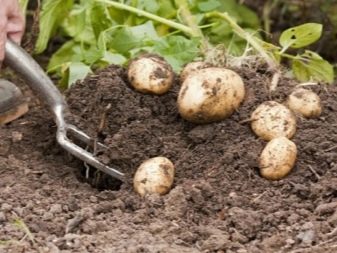
The necessary conditions
It is a well-known fact that the birthplace of this culture is South America. Based on this, it is possible to identify the optimal conditions for the successful cultivation of potatoes.
- Temperature - from +15 to +22 degrees.
- Good illumination of the site and the plants themselves.
- Loose soil.
- The pH value ranges from 5.5 to 7.
- Regular irrigation while preventing waterlogging.
Medium loamy, peaty and sandy loamy soils are ideal for potatoes. It is not recommended for planting to choose areas that are characterized by excess moisture. In such conditions, the culture will not bear fruit well, if, at all, it does not rot.
In terms of crop rotation, the most suitable predecessors for potatoes are:
- cabbage;
- pumpkin;
- beet;
- corn;
- legumes.
You should not set aside the beds for planting potatoes, on which eggplants, tomatoes and peppers were previously grown. Particular attention should be paid to fertilizing the soil on the site. This is true in situations where the soil is depleted and no top dressing has been applied for a long time. Appropriate agrotechnical measures are carried out immediately before planting.
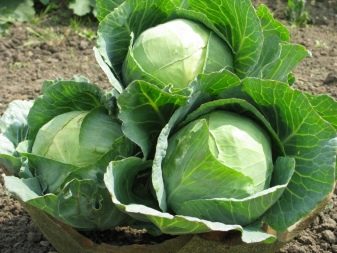

How does it grow?
The time interval from the moment of planting the tubers to the appearance of the first shoots on the beds is on average 20 days. And the determining factors here will be:
- weather conditions in the region;
- planting depth;
- soil fertility;
- quality and preparedness of planting material.
In addition to all of the above, the potato variety plays an important role. In this case, we are talking about the following ripening periods in days:
- very early - 50-65;
- early - 70-90;
- mid-season - 100-125;
- late - 140-150.
In practice, preference for one or another variety is given most often taking into account personal preferences. Despite the fact that the classical technique of growing potatoes involves finding the tubers underground, they do not develop on the root system. The vegetable begins to form at the base of the stem from the axils of the rudimentary leaves. It is there that stolons appear, at the ends of which future tubers are born. By the way, for the active growth of such shoots, the presence in the upper part of the soil is not necessary. Darkness will be a prerequisite.
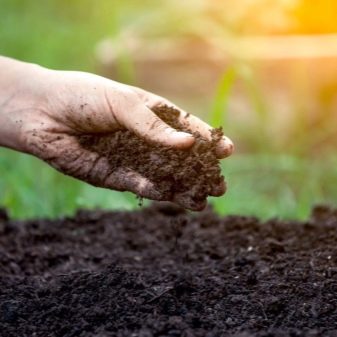
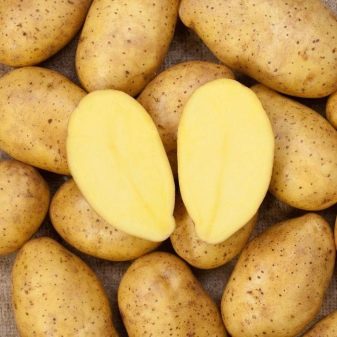
How to plant?
Modern farmers are constantly improving the technique of growing potatoes. At the moment, in practice, they use a fairly large list of planting methods. And it's not just about open ground, boxes and other options. All these techniques, as well as the peculiarities of the preparation of planting material and future beds (often in the fall) are aimed at maximizing the yield. Successful potato cultivation is based on three key points.
- Competent selection of quality tubers for planting.
- Compliance with crop rotation.
- Use of optimal disembarkation schemes.
The classic way
Despite the sufficient effectiveness of a variety of innovative solutions, the most common is the classical method. This method of planting potatoes involves placing tubers in holes in the beds, followed by sprinkling with earth. At the same time, some gardeners focus on the laboriousness of the process, which includes the following stages:
- digging up the site;
- planting tubers;
- hilling beds;
- weeding;
- watering.
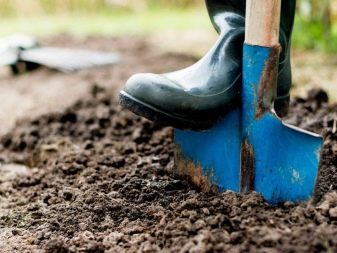
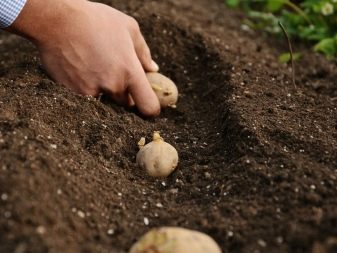
Dutch technology
This planting method is based on the careful selection of extremely high quality starting material. And also the list of important features includes the following points.
- Potatoes are planted in one place at 2-year intervals, alternating with cereals.
- The soil is prepared in the autumn.
- Before digging up the site, potassium-phosphorus fertilizers, as well as humus, are applied.
- In the spring they are fed with urea.
- Before planting, furrows 5-7 cm deep are formed in loose soil, orienting them from north to south.
- The row spacing and the spacing between tubers are 0.5-0.7 and 0.3 m, respectively.
- After 2 weeks, the first hilling of the bushes is performed.
- A comb is formed in the form of a trapezoid, the base and upper part of which should be 50-70 and 15-20 cm.
In the future, care will be reduced to the timely removal of weeds and watering. The latter is necessary when buds appear, during the period of intense flowering, and also 10 days after its termination. Two weeks before harvesting, all the tops are mowed.
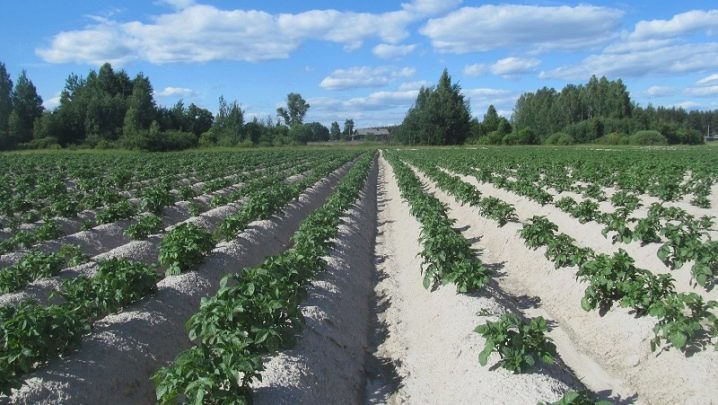
American
At one time, the agronomist Mittlider, based on personal experience, developed the optimal scheme for planting potatoes. The key feature of the method is to level the surface of the area to be prepared. Further, the algorithm looks like this.
- Formation of beds of 0.45 m in the direction from north to south. The optimal length and inter-row spacing are 9 and 0.9-1 m, respectively.
- Create staggered two rows of holes 10-12 cm deep at intervals of 30 cm.
- Laying germinated tubers and sprinkling them with soil
The list of the main advantages of the Mittlider technique includes high yields, ease of caring for plants, as well as providing full lighting for the bushes.
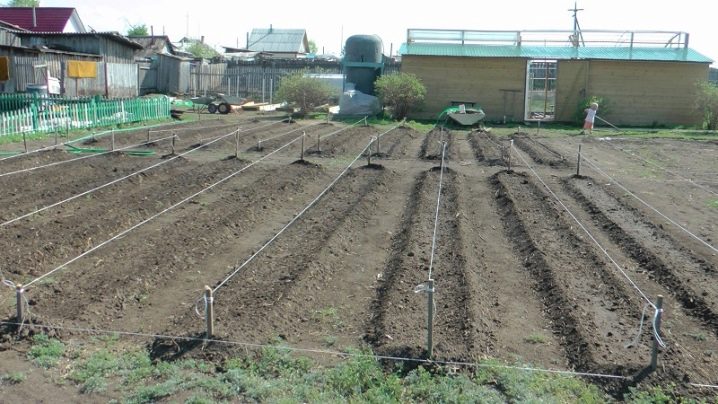
Gülich method
This method of modern agricultural technology involves the use of rather large areas. Each of them must be divided into 4 equal squares with a side of about a meter. Further, the procedure is as follows.
- At the same time, a compost or manure roller is placed in the center.
- Form small holes.
- Tubers are placed with future sprouts down and covered with soil.
- After the sprouts appear, a soil mixture is added to the center of the bush.
Such manipulations are repeated several times. As a result, due to the active development of shoots, the yield of the crop increases.

In barrels and bags
The technique of planting popular crops in bags and barrels is easy to implement with good performance. As practice has shown, the method is most suitable for small areas with a soil that is not very suitable for potatoes. The use of barrels and other similar containers is quite popular. The process itself is as follows.
- At the bottom, a tuber or several tubers are laid in a checkerboard pattern.
- After germination, about 10 cm of humus or compost is poured.
- As the bush (s) develops, organic matter is added.
In a situation with dense bags, the method involves the following steps.
- Preparation of a soil mixture from equal parts of garden soil, humus, as well as rotted compost or manure.
- Filling the bags with the resulting substrate.
- Hanging bags filled with mixture in a well-ventilated area.
- Making side cuts.
- Placement of previously germinated tubers in the cuts.
An alternative option involves alternating laying of the substrate (15-20 cm) and tubers. As germination progresses, soil is added to the bags.
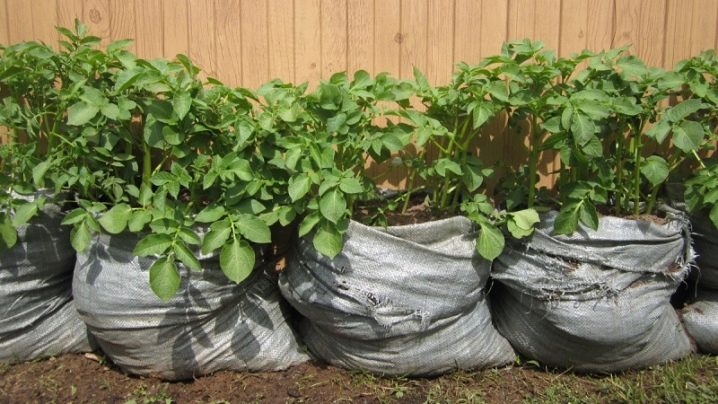
Under film or straw
A black film is used as a cover, an alternative to which is a non-woven material. This planting method allows you to bring the time of harvest closer. It is based on the ability of dark surfaces to attract sunlight and heat.
The use of straw is a unique, but at the same time, the most simple technology that greatly facilitates the work of the gardener. The agronomist Rytov proposed a planting method that does not involve digging a site. It will be required in the spring.
- In the garden, make grooves up to 20 cm deep with an interval of about 0.7 m.
- Spill them with water and spread the tubers.
- Spread out the straw on the site with a layer of 0.45 to 0.5 m.
The main advantages of the method are easy harvesting, increasing soil looseness, improving the quality of tubers. The key disadvantage is the increased risk of rodents in the straw.
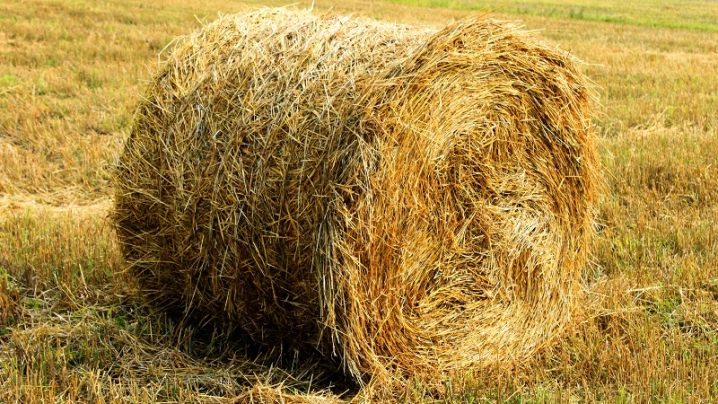
In the mounds
In some moments, this option for planting potatoes repeats the previous one. The main difference here will be the presence of a kind of wall. To properly grow a good harvest, you must:
- dig up the area allocated for potatoes and fertilize it;
- mark circles with a diameter of 1.5 to 2 m;
- spread out the planting material along the resulting circles with an interval of 20-25 cm;
- lightly sprinkle the tubers with earth;
- as shoots appear, fill up the soil, forming round mounds, the height of which reaches 0.4 m;
- make funnels on the tops of the mounds to drain water into the center
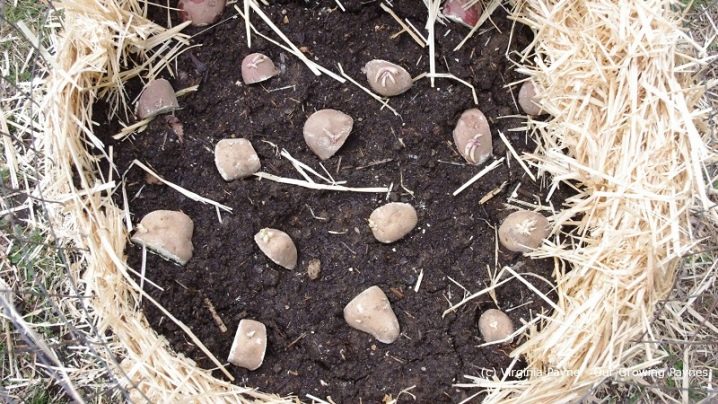
Care
It is no secret that to get a rich and high-quality harvest, it is not enough to plant potatoes correctly. To achieve positive results, you will have to competently care for the cultivated crop from the moment of planting to collecting potatoes. At the same time, the main agrotechnical measures will be:
- weeding and hilling;
- watering;
- the introduction of fertilizers (phosphorus-potassium and organic) in compliance with certain norms (if you do not feed the crop in time and competently, you should not count on a good yield).
In addition to all of the above, chemical treatment of sites and the plants themselves is often used. This refers to the fight against pests and diseases.
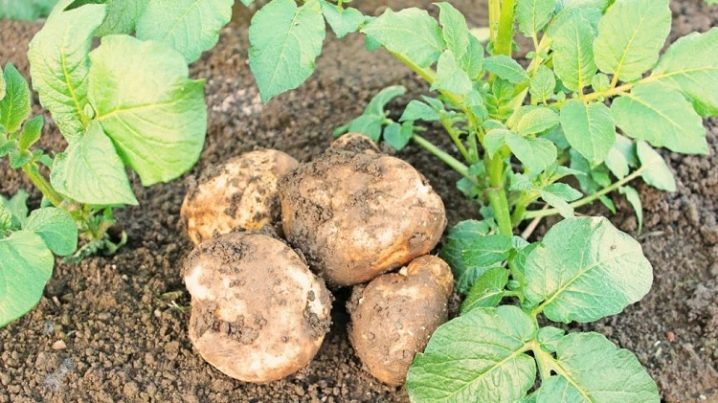
Weeding and loosening
Such a complex of agrotechnical techniques greatly improves the quality and volume of the crop. In the course of weeding, in addition to weeds, excess tops are removed, which takes some of the nutrients from the soil. For processing large plantings, cultivators and walk-behind tractors are used. During the season, 2 weeding are performed:
- 3-4 weeks after planting the tubers;
- when the bushes reach a height of about 0.3 m.
After flowering is complete, such events become optional. In addition to weeding, attention should be paid to loosening. To improve the aeration of the soil, it is preliminarily moistened, and then the top layer is raised with a rake.
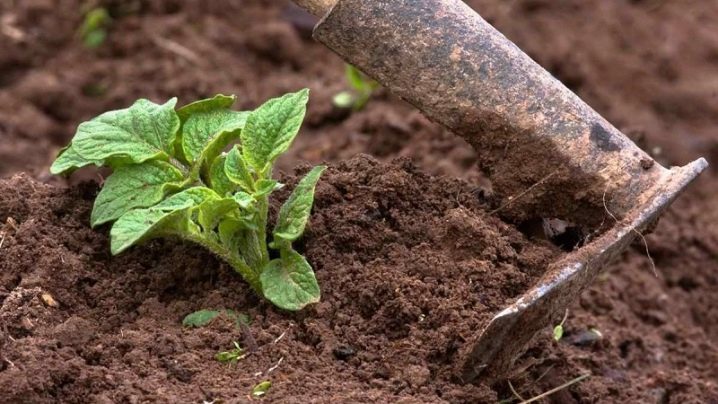
Watering
It is important to immediately note that the crop in question does not need such intensive irrigation as, for example, cucumbers. Often, when growing potatoes in the open field, periodic rainfall will be quite sufficient. With a dry summer, additional moisture will, of course, be required. Immediately after planting, the tubers are not watered, since the roots should get stronger and form. Excess moisture will be guaranteed to interfere with these processes. Watering begins after the appearance of the first shoots and during the period of active foliage growth, as well as the formation of ovaries and flowering.
Several irrigation schemes for potato plantings can be distinguished, taking into account the characteristics of the growth and development of the culture.
- Trench. This refers to the supply of water with a watering can or a hose to the aisles. Cons - increased costs and erosion of the topsoil.
- Drip, providing an adjustable water supply to each bush. An important plus is that the leaves and stems of plants remain dry, which minimizes the risk of late blight.
- Natural. In this case, we are talking about precipitation in the form of rain.The main disadvantage here is the lack of dosing capability.
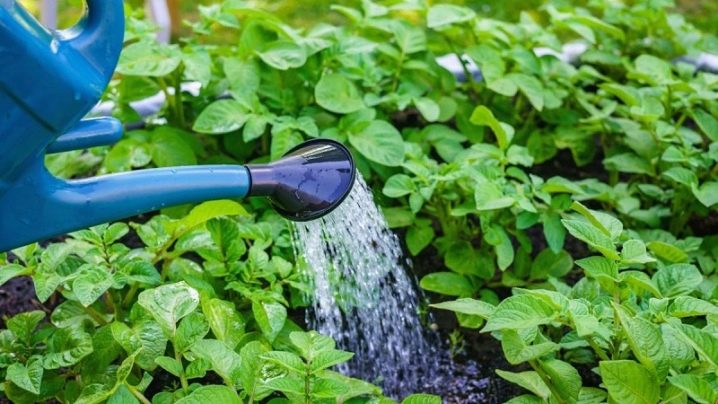
Hilling
This procedure is recommended after loosening the beds. It is important to remember that the first hilling occurs at the germination stage. As soon as the young growth reaches a height of 12-15 cm, it is carefully sprinkled with earth on the sides by hand or using a hoe. This agrotechnical technique has the following advantages:
- effective protection of tubers from negative natural phenomena;
- ensuring good lighting of areas between the bushes;
- elimination of small tops;
- easier harvesting.
It should be borne in mind that the frequency of hilling is directly determined by the density of the soil.
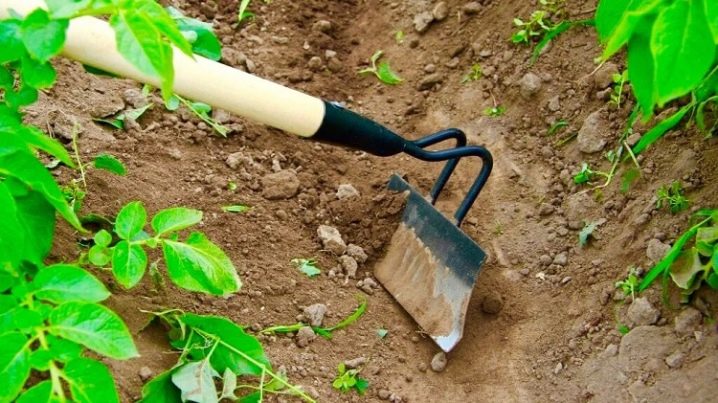
Fertilizer
As soon as the first shoots appear, experienced gardeners prefer to apply slurry. It is preliminarily diluted with water in a ratio of 1: 15, infused for 2 days and filtered. A liter of the resulting solution is applied under each bush. Mineral complexes are used in accordance with the instructions before hilling bushes.
It is important to remember that when a plant is in bloom, it needs sufficient potassium and phosphorus when pollinated. Many vegetable growers breed potassium sulfate in a ratio of 1 tbsp. l. 10 liters of water with the addition of ash solution. Today, one of the best fertilizers for potatoes is potassium magnesium. The main advantage of the drug is the absence of chlorine in its composition. Moreover, its component, in addition to potassium, is magnesium necessary for potatoes (10%).
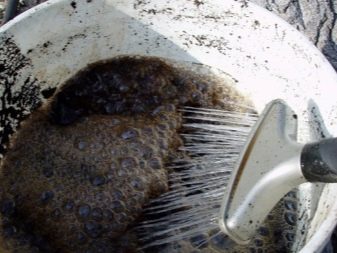
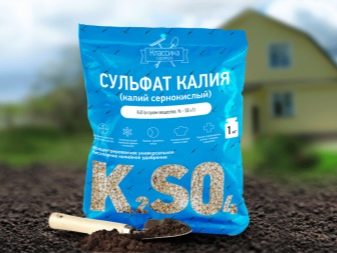
Diseases and pests
Improper care usually has extremely negative consequences. Gardeners have to deal with a number of problems, including, for example, situations where the tubers crack. Pests, as well as various diseases, often become sources of trouble.
- Late blight - copper sulfate is introduced into the soil at the rate of 4 g per 1 square meter. In addition, pre-planting processing of the tubers themselves is carried out.
- Potato cancer - the affected bushes are removed and destroyed, and the soil is treated with fungicides.
- Common scab - ammonium sulfate is an effective means of fighting the disease.
- Ring rot - for prevention, it is recommended to select exceptionally healthy tubers when planting.
- Rhizoctonia or black scab - disinfection of planting material is an effective means of prevention.
The main enemies of the potato today are the Colorado potato beetle, wireworm and nematode. Pest control is now possible in many ways. And we are talking about both folk recipes and modern chemical preparations. For example, it is important to consider that early varieties are not treated with insecticides. Based on this, celandine, onions and wormwood will be the best remedies. In parallel, it is necessary to remove and burn the leaves with the larvae.
In situations with the processing of mid-season and late varieties, it is allowed to use chemistry with a large number of insects. It is worth noting that the use of such agents for prevention is unacceptable. Regular inspection and manual collection of the beetles is an effective alternative.
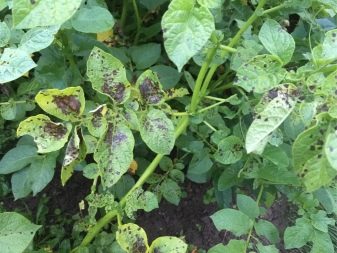
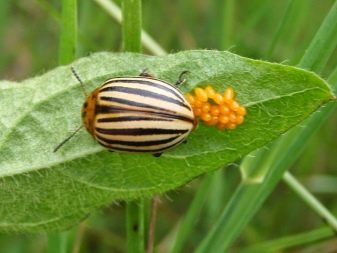













The comment was sent successfully.